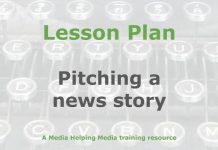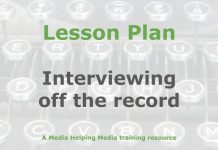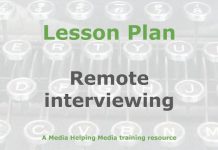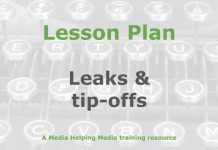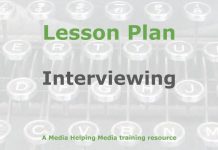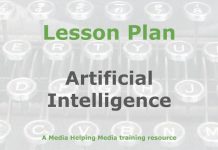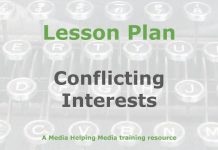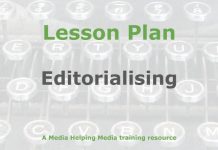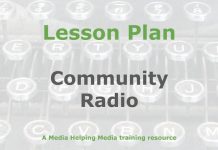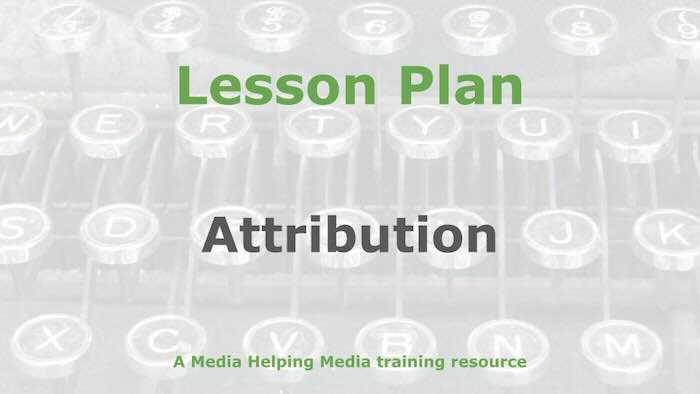 This lesson plan is designed to teach students how to reference material, provide attribution, and avoid plagiarism.
This lesson plan is designed to teach students how to reference material, provide attribution, and avoid plagiarism.
It’s based on the article Referencing, attribution, and plagiarism written which we suggest you read the article before planning the lesson set out below.
Learning objective
Students will accurately identify and apply proper referencing and attribution techniques in their news writing to avoid plagiarism. They will demonstrate the ability to respect sources and differentiate between original content and public domain material.
- Student-facing objective: By the end of this lesson the student will know how to credit sources in their news writing and avoid plagiarism (copying the work of others without permission) by using proper referencing and attribution.
- Standards: Journalists will learn how to provide proper references and attribution in their news writing as well as avoiding plagiarism.
Learning activities
Warm-up
- Discussion: Begin with a brief discussion on the importance of originality in journalism. Ask students to share examples of when they encountered news stories that seemed similar.
- Example: Present a short paragraph from a fictional news article. Ask students to identify which parts might require attribution if used in another piece. Encourage them to think about why attribution is necessary and how it respects the original source.
- Sharing: Conclude by asking students to share their thoughts on how proper referencing can enhance the credibility of a journalist’s work. This primes them for the lesson on referencing, attribution, and plagiarism.
Direct instruction
- Conceptual understanding: Begin by explaining the key concepts of referencing, attribution, and plagiarism. Use real-world examples, such as a journalist citing a government report in an article. Discuss why proper attribution is crucial for maintaining credibility and respecting intellectual property. Highlight the difference between original content and public domain material.
- Procedural skills and fluency: Demonstrate the process of referencing and attributing sources in news writing. Provide a step-by-step guide on how to cite a source, including the use of direct quotes and paraphrasing. Use a sample news article and walk through identifying which parts need attribution. Emphasise the importance of using minimal third-party material and providing links to original sources.
- Application: Present a scenario where students must write a brief news piece based on a press release. Instruct them to identify which information requires attribution and how to properly reference it. Encourage them to find a unique angle to develop their story, ensuring they respect the original source while adding their own investigative insights.
Guided practice
Think, Pair, Share: Guide students through a collaborative exercise to reinforce referencing and attribution skills.
- Think: Present students with a short news article. Ask them to individually identify sections that require attribution and note how they would reference these sections.
- Pair: Have students pair up to discuss their findings. Encourage them to compare their attribution choices and reasoning.
- Share: Facilitate a class discussion where pairs share their insights. Highlight different approaches and clarify any misconceptions about proper referencing.
- Feedback: Provide feedback on their attribution choices, emphasising the importance of accuracy and respect for sources.
- Reflection: Ask students to reflect on how this exercise has improved their understanding of referencing and attribution in journalism.
Independent practice
Assign students an exercise where they must write a short news article based on a provided set of facts and quotes. Ensure the facts include both original content and information from public domain sources.
- Instruct students to identify which parts of their article require attribution and to apply proper referencing techniques.
- Encourage students to find a unique angle for their article, ensuring they respect the original sources while adding their own insights.
- Provide a checklist for students to self-assess their work, focusing on correct attribution, minimal use of third-party material, and originality.
- Circulate the classroom to observe and support students as they work, offering guidance on proper referencing and attribution.
Assignment
Ask students to answer these questions:
- What is one reason proper attribution is important in journalism?
- How can you ensure that your news article respects the original source while adding your own insights?
- What’s one question you still have from today’s lesson?
Here are some suggested answers:
- Suggested answer to Question 1: Proper attribution is important because it maintains credibility and respects intellectual property.
- Suggested answer to Question 2: Ensure respect for the original source by providing accurate attribution, using minimal third-party material, and finding a unique angle for your story.
Teacher resources
Differentiation guide
- Advanced learners: Encourage them to explore complex scenarios involving multiple sources. Challenge them to identify nuanced attribution requirements and develop a more sophisticated news piece. Suggest they investigate legal implications of improper attribution and present findings to the class.
- Striving learners: Provide additional examples and guided practice on identifying when attribution is necessary. Use simpler texts and offer step-by-step support in referencing. Pair them with peers for collaborative exercises to build confidence. Consider using visual aids to illustrate the process of attribution and referencing.
- Background reading: This lesson plan outline is based on the article Referencing, attribution, and plagiarism written which we suggest you read the article before planning the lesson set out below.
Notable definitions
- Referencing: The practice of acknowledging the sources of information or ideas used in a piece of writing, ensuring that the original creators are credited.
- Attribution: The act of giving credit to the original source of information, quotes, or ideas in a piece of writing, often by mentioning the author’s name and the publication.
- Plagiarism: The act of using someone else’s work, ideas, or expressions without proper acknowledgment, presenting them as one’s own.
Required materials
- Computers: For accessing online resources and plagiarism checkers.
- Sample news articles: For analysis and practice.
- Printed press releases: For writing exercises.
- Checklist handouts: For self-assessment of referencing and attribution.
- Projector: For displaying examples and instructions.
- Whiteboard and markers: For illustrating key concepts and facilitating discussions.
Lesson summary
- Warm-up
- Direct instruction
- Guided practice
- Independent practice
- Assignment
The free teaching tools at the Khan Academy were used as a basis for converting the original article into a lesson plan.
Related articles
